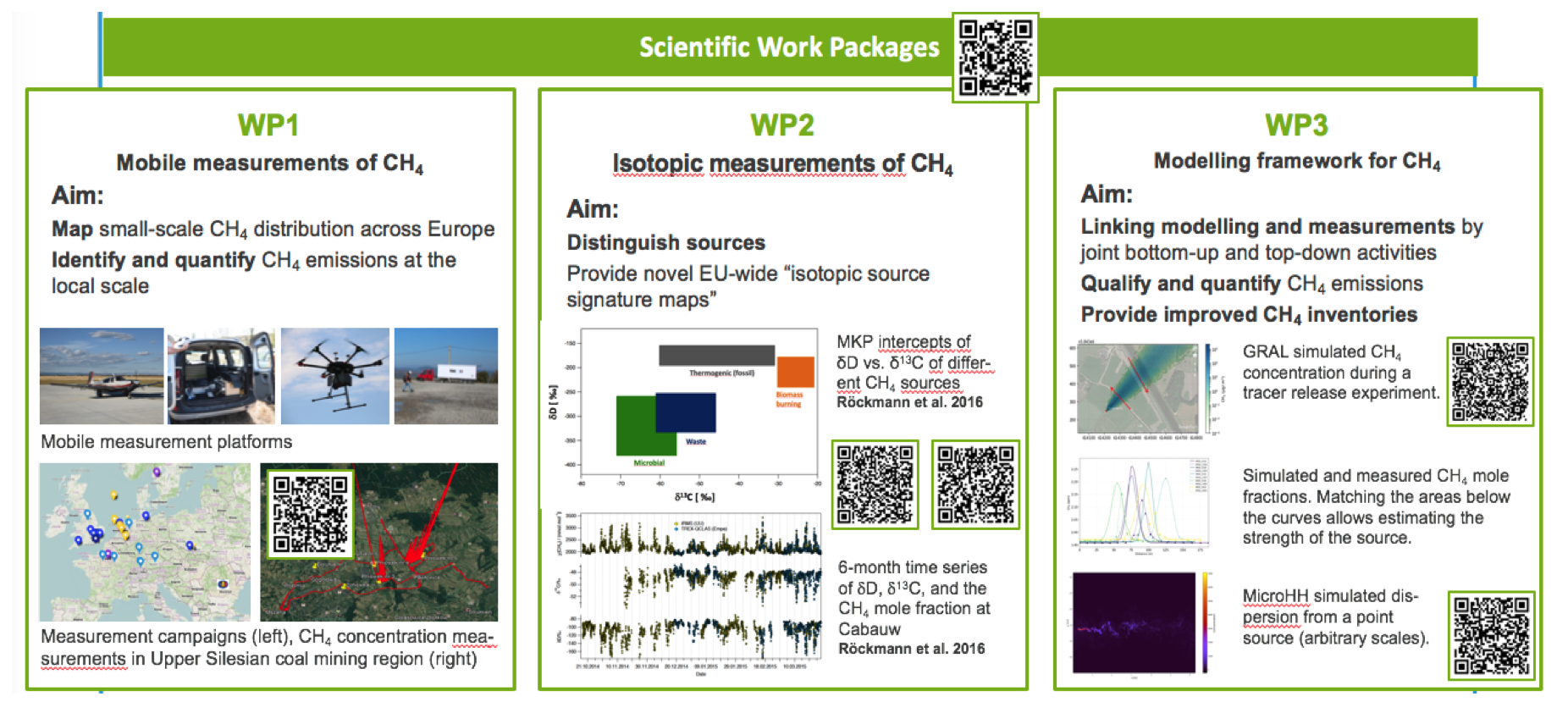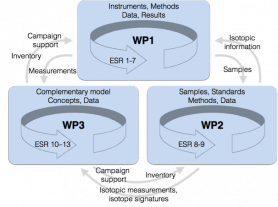Work Packages
MEMO2 is organized in 5 Work Packages (WPs), whereas the ESR projects are grouped in 3 scientific Work Packages (WP1-3), accompanied by a training Work Package (WP4) and a management Work Package (WP5).
The three scientific WPs are strongly interconnected. In WP1, participants and non-academic partners will carry out mobile measurements across Europe. In WP2 we use state-of-the-art isotope techniques to attribute observed CH4 elevations to individual sources. In WP3 we develop novel tools to translate these CH4 elevations into emissions and to integrate local measurements from WP1 and WP2 to the European scale. The scientific WPs share a common objective and complement each other by detecting (WP1), attributing (WP2) and quantifying (WP3) CH4 emissions in Europe using measurements on mobile platforms.

Interaction between the different scientific WPs is clearly implemented in the research program of the MEMO2 project by the incorporation of several win-win activities. Air samples and measurement data will be shared within and between the WPs to obtain a EU-wide distribution of the major CH4 source categories and their isotopic composition. ESRs of WP1 will collect air samples for isotope analysis by the ESRs in WP2. This provides the ESRs from WP1 with information on source attribution and the ESR from WP2 with EU-wide access to samples from various source categories. Furthermore, the high precision isotope techniques of the ESRs in WP2 will be used to calibrate and quality control new mobile analysers that are available at three of our host institutes of ESRs in WP1 (UVSQ, UHEI and AGH), which will also be deployed on the mobile platforms. The ESRs of WP1 and WP2 will collect data that will be further integrated in the modelling tools developed in WP3 with the aim to improve EU emission maps with the support of our non–academic partner TNO.
 |
|
Interaction within and between the scientific WPs of MEMO2 |
There will be close interaction between the ESRs of all WPs on the interpretation of the entire dataset. Two intensive campaigns involving all ESRs in the MEMO2 network will be carried out. Modellers from WP3 will play an important role in the planning of the measurement strategy for WP1 and WP2 by predicting weather and dispersion characteristics of point sources simulating observations of virtual vehicles and UAVs. Interaction and collaboration will be facilitated by mandatory exchange visits (secondments) and regular “data-sharing days”.
Beside the scientific WPs the training WP (WP4) plays an important role in this type of project. The MEMO2 training program follows a holistic approach including disciplinary/interdisciplinary elements, individual/collective training, and theoretical/practical courses, all aiming to prepare the ESRs with key competences to tackle scientifically complex and societally relevant issues. Targeted competences in MEMO2 are the ability to: I) effectively and interactively use and develop tools such as innovative technologies, knowledge, and languages in an interdisciplinary way, II) act autonomously within the “big picture” of climate sciences, III) function and interact synergistically within a socially heterogeneous group, and IV) responsibly conduct and manage a challenging research project within 3 years.
The overall management of the project is organized within WP5 to provide effective and efficient project management and to ensure I) the implementation of administrative, contractual and financial duties of the consortium towards the EC, and II) an effective, continuous, and wide dissemination and exploitation of results.

